
Plant
10:59, 10-Apr-2019
Carnivorous Plant: Shining dew, dangerous traps
Updated
15:27, 29-Apr-2019
By Xu Chenlu
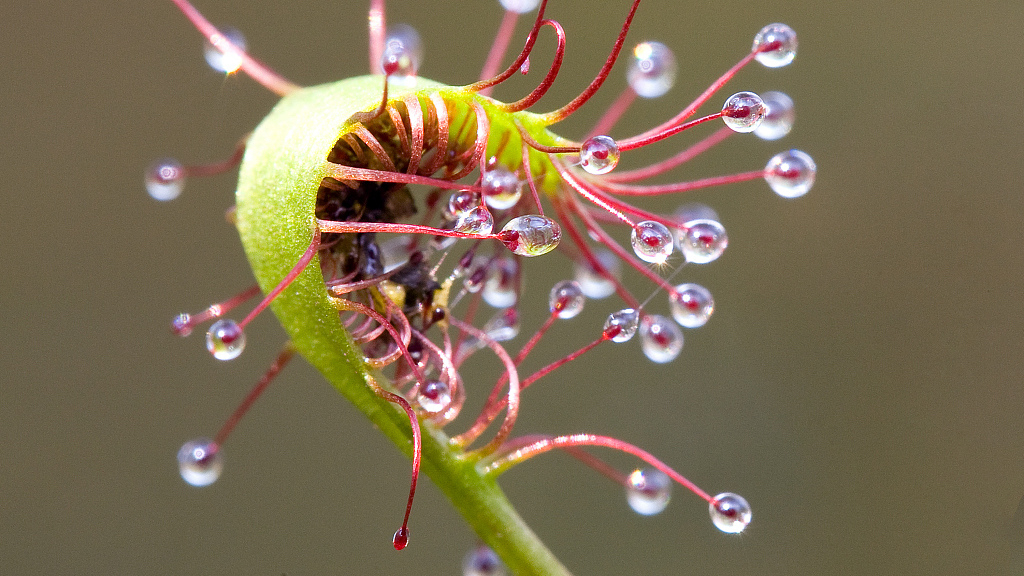
Sundew is not dew, but actually the name of a plant which has leaves covered by drops like morning dew. Bathing in the sun, these glistening "dewdrops" make the plant fresh and vivid.
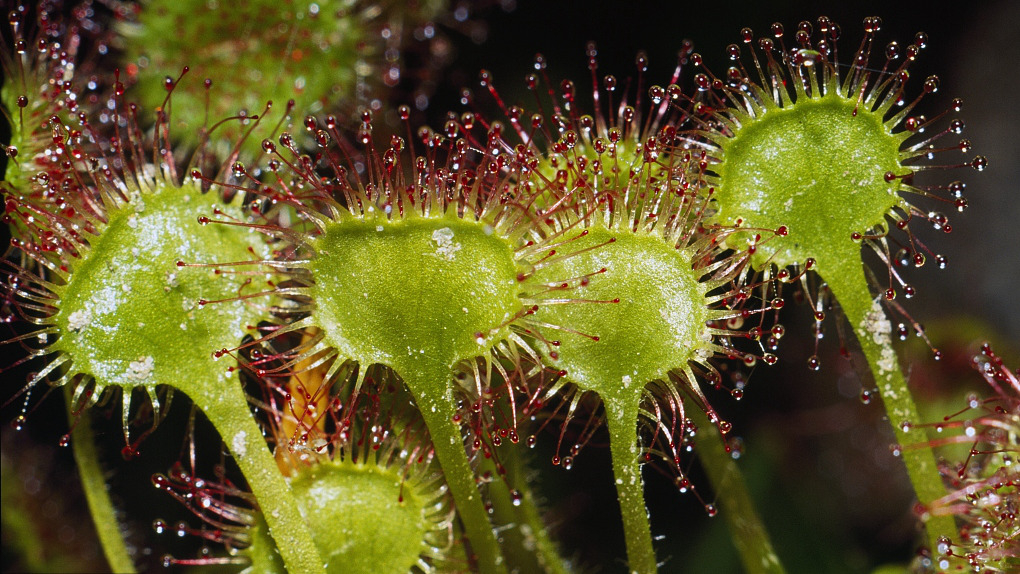
Dewdrops on round-leaved sundew plants /VCG Photo
Dewdrops on round-leaved sundew plants /VCG Photo
The dew on sundew's leaves is a kind of mucilage for luring and entrap insects and other small prey. It is sweet, but also sticky.
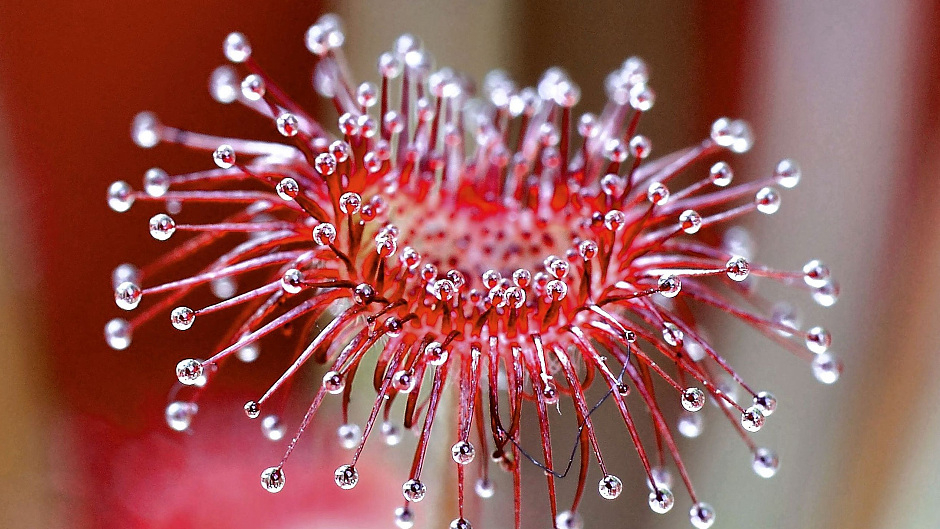
Closeup of a sundew /VCG Photo
Closeup of a sundew /VCG Photo
For certain types of sundew like Cape Sundew and Spoonleaf Sundew, they can curl up their tentacles to ensure the prey is in their plates. Soon, the prey will be digested by enzymes that are secreted from the glandular trichomes that cover the leaves' surface.
Following this "attract, arrest and absorb" mechanism, sundew's capture of prey is quite efficient.
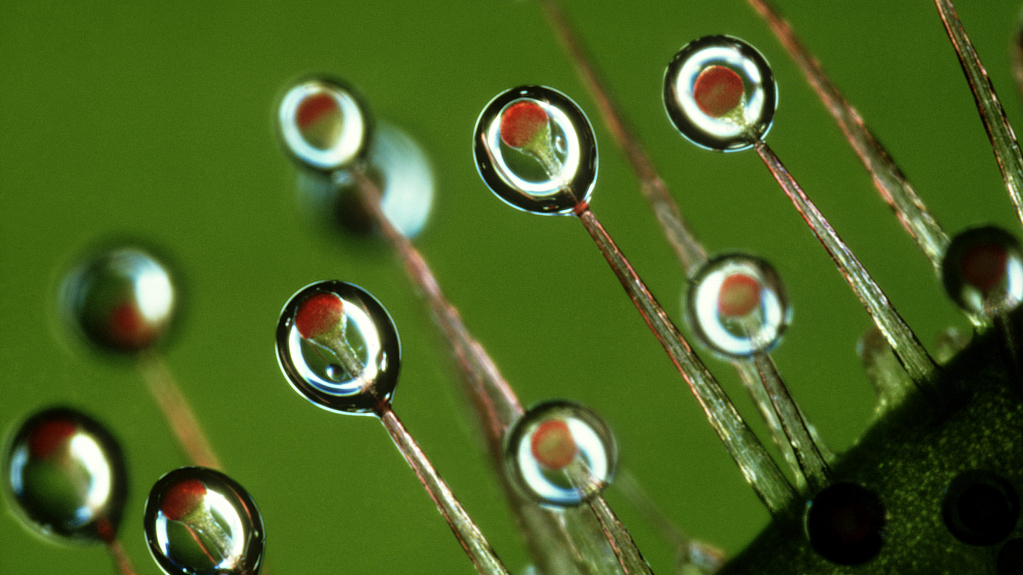
Sticky hairs of the sundew. /VCG Photo
Sticky hairs of the sundew. /VCG Photo
Normally, sundew lives in places that are seasonally moist and have high levels of sunlight. The soil that sundew grows in is usually acidic and lack nutrients. Hence, just like other carnivorous plants, the sundew needs to prey on insects for nutrients locked in minerals, especially nitrogen.
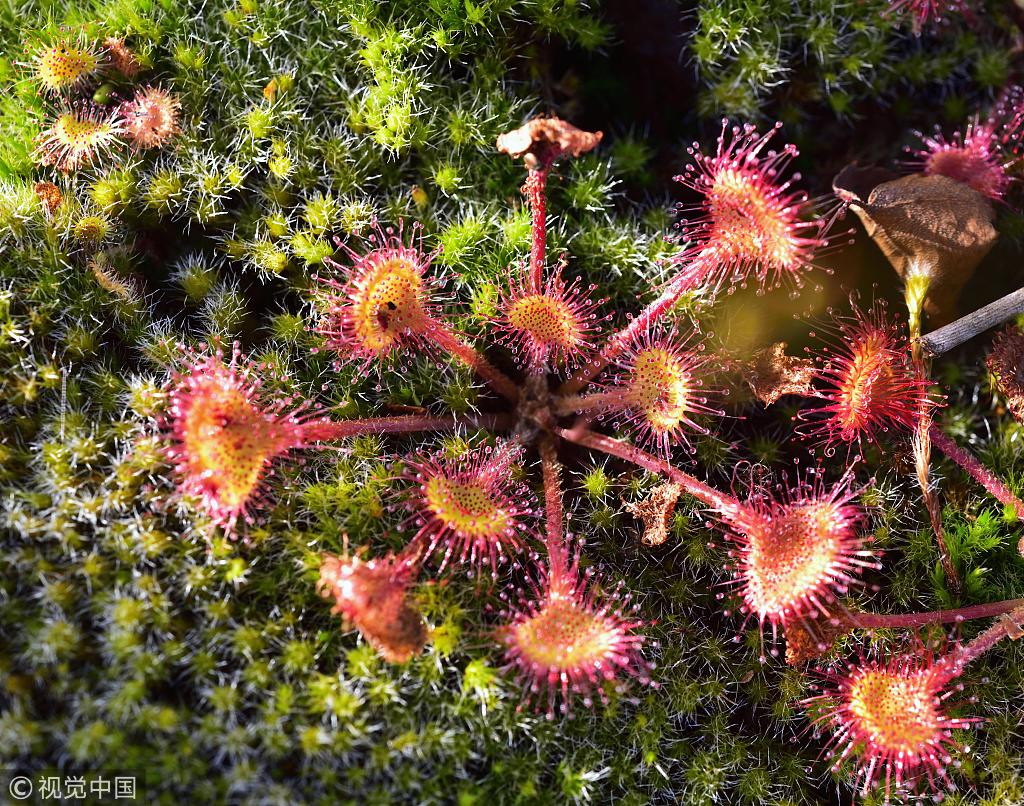
Oblong-leaved sundew on moss in a moor in Bavaria, Germany. /VCG Photo
Oblong-leaved sundew on moss in a moor in Bavaria, Germany. /VCG Photo
Sundew also has flowers that grow a long stem which is much higher than its leaves. Thus during their fluorescence, insects that help to pollinate flowers will not become "accidental snacks" of the sundew. This also enables the plant to disperse its seeds.
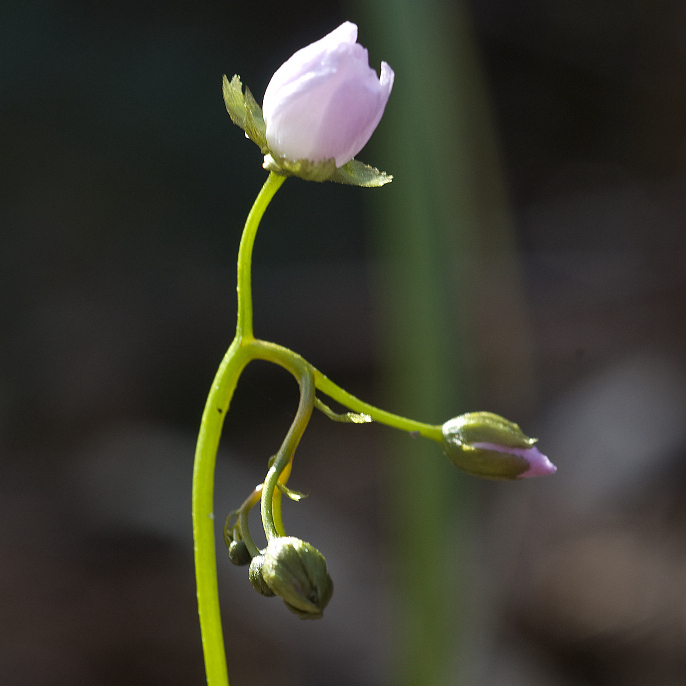
The flower of shield sundew /VCG Photo
The flower of shield sundew /VCG Photo
Sundew is the largest genus of carnivorous plants. It can be found all over the world. Among the distribution, Australia has nearly fifty percent of the varieties. In China, they grow in southwest China, particularly in Sichuan and Yunnan provinces.
About Carnivorous Plant series:
At this year's International Horticultural Exposition, there is a special zone in the Plant Pavilion for various carnivorous plants. Carnivorous plants are plants which prey on insects or small animals for extra nutrition that they cannot get simply from the soil, water, and sunlight. In this series, we are going to present to you the most typical carnivorous plants.
(Cover images via VCG)
(If you want to contribute and have specific expertise, please contact us at nature@cgtn.com.)

SITEMAP
Copyright © 2018 CGTN. Beijing ICP prepared NO.16065310-3
Copyright © 2018 CGTN. Beijing ICP prepared NO.16065310-3